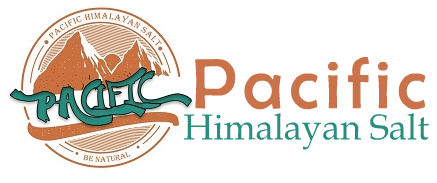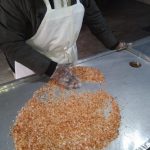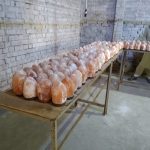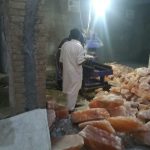The History of Himalayan Pink Salt
These beautiful pink salt crystals are mined from the great Salt Range of the Himalayas, an area that geologists estimate could be 800 million years old. You could be eating a salt crystal that was actually formed in the Precambrian era,around the same time the first multi-celled life began (we’re talking little tiny organisms that were the first sign of life on this planet). In all senses of the word, this salt is a truly old spice. The Khewra Salt Mine is located just north of PindDadan Khan, a district of Punjab in Pakistan. It’s the world’s oldest salt mine (and still the second largest). It is world famous, annually attracting 250,000 tourists, who come to see the unearthing of huge bricks of this unique pink salt. Geologists believe that the Great Salt Range was formed when tectonic plate movements formed a mountain range that trapped a shallow inland sea, which was slowly dehydrated and buried deep in the earth, forming thick, mineral-rich sea salt deposits.
For millions of years the Salt Range went untouched as animal and human species developed all around it. In 1849, a British mining engineer named Dr. Warth helped design and build a tunnel into the salt range, allowing better access to the salt deposits. His “pillar and chamber” mining method — still in use today — called for the excavation of 50 percent of the salt, while the remaining 50 percent was left as structural support for the mine. Now the mine tunnels about 730 meters into the mountain, and the underground mine covers about 43 square miles! It is estimated that the total amount of salt still remaining in the region is somewhere between 80–600 million tons.
Rather than mass exploitation of the prized commodity it produces, the mine garners great respect from those that both visit and work there. Its sacred healing power is left untouched as the crystalline pink salt from the mine reaches the hands of consumers unprocessed and unrefined. Table salt, or straight sodium chloride, is the most commonly consumed salt. It is mostly mass produced and undergoes several processes that strip the salt crystals of natural minerals, while adding “supplements” like iodine. Typical table salts also have chemicals added to prevent clumping.
For example, the pink himalayan sea salt from Essential Living Foods, on the other hand, is rich with minerals that have been undisturbed in the salt deposit for millions of years. Because this salt comes from such an ancient salt deposit, it’s been unexposed to toxic pollution from the air and water and is therefore some of the purest salt on earth. Many other sea salts, on the other hand, are mined from salt beds by our oceans, which are unfortunately highly polluted.
It’s amazing to think about this salt as something more profound than just flavoring for your next meal. With each bite, you can taste the history that our natural world provides.




























